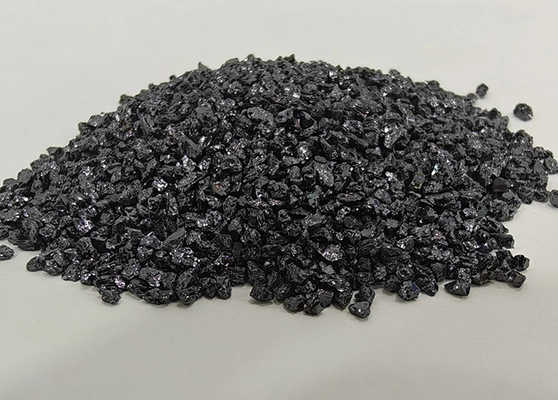Quick Answer: Non-metallic abrasives such as silicon carbide, fused alumina, and garnet are sharp, hard, and chemically stable, making them ideal for precision grinding, blasting, and polishing. Metallic abrasives such as steel grit, steel shot, and aluminum granules are tougher and more reusable, preferred for heavy-duty blasting, cleaning, and surface preparation. The main differences are in hardness, recyclability, density, and typical application fields.
Definitions
Abrasives are materials used to wear down, smooth, or clean surfaces by friction. They are commonly divided into two categories:
- Non-Metallic Abrasives: Minerals or synthetic ceramics (e.g., silicon carbide, alumina, garnet, glass beads).
- Metallic Abrasives: Metal-based particles (e.g., steel grit, steel shot, aluminum, zinc, copper slag).
Non-Metallic Abrasives
Non-metallic abrasives are natural or synthetic minerals with sharp edges and high hardness. They are generally lighter than metals, chemically inert, and create finer finishes.
- Silicon Carbide (SiC): Extremely hard (Mohs 9.2–9.5), sharp cutting edges, used in grinding and blasting.
- Fused Alumina (BFA/WFA): Versatile, widely used in grinding wheels, coated abrasives, refractory raw materials.
- Garnet: Eco-friendly, often used in waterjet cutting and blasting.
- Glass Beads: Gentle cleaning, peening, cosmetic surface finishing.
Metallic Abrasives
Metallic abrasives are produced from steel, aluminum, or other alloys. They are denser and more impact-resistant, making them highly recyclable.
- Steel Grit: Angular particles, aggressive cleaning and surface roughening.
- Steel Shot: Spherical, used for peening and producing smooth finishes.
- Aluminum Granules: Lightweight blasting for delicate surfaces.
- Copper Slag: Byproduct abrasive for surface cleaning and descaling.
Comparison: Non-Metallic vs Metallic Abrasives
| Criteria | Non-Metallic Abrasives | Metallic Abrasives |
|---|---|---|
| Material Type | Minerals, ceramics (SiC, alumina, garnet, glass) | Metals & alloys (steel, aluminum, copper) |
| Hardness | High (up to Mohs 9.5) | Moderate (Mohs 6–8) |
| Recyclability | Limited reuse, often single-cycle | Highly reusable (50–200 cycles) |
| Density | Lower (lighter blasting impact) | Higher (strong impact energy) |
| Surface Finish | Smoother, finer finishes possible | Coarser profiles, deep cleaning |
| Applications | Precision grinding, polishing, delicate blasting | Heavy-duty blasting, peening, descaling |
Applications
Choosing between non-metallic and metallic abrasives depends on the process requirements:
- Non-Metallic: Aerospace, electronics, optics, fine ceramics, waterjet cutting, surface polishing.
- Metallic: Shipyards, automotive, construction, pipeline maintenance, foundry cleaning.
FAQs
Which is cheaper: metallic or non-metallic abrasives?
Metallic abrasives may have higher upfront cost but are reusable, reducing long-term expense. Non-metallic abrasives are often cheaper per ton but used in single-pass applications.
Can metallic and non-metallic abrasives be used together?
Not typically, as their density and hardness differ. Mixing may lead to inconsistent surface finishes.
Which is better for precision polishing?
Non-metallic abrasives such as silicon carbide, alumina, and glass beads are preferred for fine finishes.
References
- ASM Handbook – Abrasives and Grinding Fundamentals
- FEPA Grit Size Standards (F and P series)
- AFS Sand Testing and Foundry Abrasives Guide
